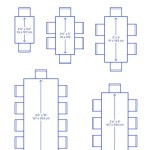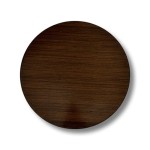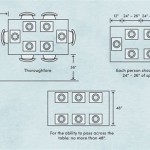How to Remove Old Wax from a Wood Table
Old wax buildup on a wood table is a common problem, resulting from repeated applications of wax polishes over time. This accumulation can create a hazy, dull, or even sticky surface that detracts from the wood’s natural beauty. Removing this buildup is essential for restoring the table's luster and allowing wood care products to effectively protect and nourish the wood. Several methods exist for removing old wax, each with its own advantages and disadvantages. The chosen method depends on the severity of the wax buildup, the type of wood, and the desired level of refinishing.
Before undertaking any wax removal process, it is crucial to identify the type of finish already present on the table. A shellac or varnish finish will react differently to solvents and heat than an oil-based or lacquer finish. Performing a test in an inconspicuous area is highly recommended to determine the compatibility of the chosen cleaning method with the existing finish. Test the chosen solvent or technique on a small, hidden area of the table to ensure it doesn't damage or discolor the existing finish. If the finish softens, dissolves, or lifts, the chosen method is unsuitable, and an alternative approach should be considered.
Identifying the Wax and Finish
Distinguishing between old wax and the original finish is a vital first step. Old wax typically has a dull, uneven appearance and may feel sticky or gummy to the touch. The original finish, on the other hand, should appear more uniform and be free of stickiness. If unsure, gently scraping a small area with a plastic scraper can reveal layers of wax buildup. The color and consistency of the scraped material can offer clues about the nature of the wax and the underlying finish.
The type of finish can often be determined based on the age and style of the furniture. Antique furniture is often finished with shellac or varnish, while more modern pieces may have a lacquer or polyurethane finish. A simple test involves applying a small amount of denatured alcohol to a hidden area. If the finish becomes sticky or dissolves, it is likely shellac. Lacquer will also soften when exposed to lacquer thinner. Polyurethane finishes are typically resistant to both denatured alcohol and lacquer thinner.
Methods for Removing Old Wax
Several methods are available for removing old wax from a wood table, ranging from mild to more aggressive techniques. The selection of a method should consider the age, value, and condition of the table, as well as the extent of the wax buildup.
Mild Cleaning:
For light wax buildup, a simple cleaning with a mild solvent and a soft cloth may be sufficient. Mineral spirits are a common choice for this purpose, as they are effective at dissolving wax without damaging most finishes. Apply mineral spirits sparingly to a clean, lint-free cloth and gently wipe the affected area. Avoid saturating the wood, and work in small sections. Regularly change the cloth to prevent redepositing the dissolved wax. After cleaning, allow the surface to dry completely before applying a fresh coat of wax or polish.Heat Application:
Heat can soften old wax, making it easier to remove. A hairdryer or heat gun (used on a low setting and held at a safe distance) can be used to gently warm the wax. As the wax softens, blot it with a clean, absorbent cloth or paper towel. Avoid overheating the wood, as this can damage the finish. Work in small sections and continuously monitor the temperature of the surface. Once the wax is removed, clean the area with mineral spirits to remove any remaining residue.Wax Remover Products:
Several commercial wax remover products are available, specifically formulated to dissolve and lift old wax from wood surfaces. These products typically contain solvents that are more aggressive than mineral spirits, so it is crucial to test them in an inconspicuous area before applying them to the entire table. Follow the manufacturer's instructions carefully, and wear appropriate personal protective equipment, such as gloves and eye protection. After using a wax remover, clean the surface with mineral spirits to remove any remaining residue and allow the table to dry completely.Scraping:
In cases of heavy wax buildup, gentle scraping with a plastic scraper or a dull putty knife may be necessary. Hold the scraper at a low angle and apply gentle pressure to avoid scratching the wood. Work in the direction of the grain, and remove the wax in small, manageable pieces. After scraping, clean the surface with mineral spirits or a wax remover to remove any remaining residue. This method is best used in conjunction with other methods, such as heat application, to soften the wax and make it easier to remove.Steel Wool:
Fine steel wool (grade 0000) can be used to remove stubborn wax buildup, but it should be used with caution, as it can scratch the finish if used improperly. Always use steel wool in conjunction with a lubricant, such as mineral spirits or a wax remover. Apply the lubricant to the surface and gently rub the steel wool in the direction of the grain. Avoid applying excessive pressure, and regularly check the surface for scratches. After using steel wool, clean the surface with mineral spirits to remove any remaining residue and steel wool fibers.Detailed Steps for Wax Removal Using Mineral Spirits
Using mineral spirits is a generally safe and effective method for removing old wax from wood tables, particularly when the buildup is not excessively thick. Here's a detailed breakdown of the process:
Preparation: Begin by gathering the necessary materials: mineral spirits (odorless mineral spirits are preferable), clean lint-free cloths (cotton rags or microfiber cloths work well), a plastic scraper (optional), and gloves. Work in a well-ventilated area, as mineral spirits can emit fumes. Protect the surrounding surfaces with drop cloths or plastic sheeting.
Testing: Before applying mineral spirits to the entire table, test it in an inconspicuous area, such as underneath the table or on a leg. Apply a small amount of mineral spirits to a cloth and gently wipe the test area. Observe the finish for any adverse reactions, such as softening, lifting, or discoloration. If no adverse reactions occur after a few minutes, proceed with the wax removal process.
Application: Dampen a clean cloth with mineral spirits. Avoid saturating the cloth, as excessive moisture can damage the wood. Gently wipe the affected area in the direction of the grain. Work in small sections, and regularly change the cloth to prevent re-depositing the dissolved wax. If the wax buildup is heavy, it may be necessary to repeat the process several times.
Scraping (Optional): If the mineral spirits alone are not sufficient to remove the wax, use a plastic scraper to gently scrape away the softened wax. Hold the scraper at a low angle and apply gentle pressure to avoid scratching the wood. Work in the direction of the grain, and remove the wax in small, manageable pieces. Be patient and avoid using excessive force.
Cleaning: After removing the wax, clean the entire surface with mineral spirits to remove any remaining residue. Use a clean cloth and wipe the surface in the direction of the grain. Ensure that all traces of wax and mineral spirits are removed.
Drying: Allow the table to dry completely before applying a fresh coat of wax or polish. The drying time will depend on the humidity and temperature of the room, but it typically takes several hours or overnight. Ensure adequate ventilation during the drying process.
Finishing: Once the table is completely dry, inspect the surface for any imperfections. If necessary, lightly sand the surface with fine-grit sandpaper (220-grit or higher) to smooth out any rough spots. Remove any sanding dust with a tack cloth. Finally, apply a fresh coat of wax or polish to protect the wood and enhance its appearance. Follow the manufacturer's instructions carefully, and allow the finish to dry completely before using the table.
Removing old wax from a wood table requires patience and careful attention to detail. By following these methods and taking appropriate precautions, it is possible to restore the table's beauty and protect it from further damage.

How To Remove Furniture Wax From Hg Provides The Best Tips

How To Easily Remove Candle Wax From Furniture Today S Homeowner

How Do You Remove Wax From Floors Happy

Home Dzine How To Remove Excess Wax From Furniture

Re Filthy Antique Wood And Furniture Fast Simple

How To Get Candle Wax Off Wood Fantastic Cleaners

How To Remove Heat Stains From Wood 10 Easy Diy Ways

How To Remove Furniture Wax From Hg Provides The Best Tips

How To Strip Old Varnish Refinishing Wood Top Table Part 1

How Can I Get Rid Of Pledge Build Up On Wood Table Hometalk
Related Posts








